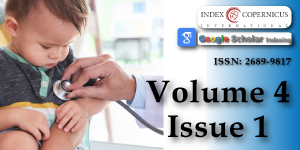Rationality and irrationality in the use of antibiotics in the epiclatino Latin American Neonatal Units
Main Article Content
Abstract
Background: Recent years have seen chaos in the neonatology use of antibiotics with diverse opinions and recommendations in international guidelines and societies. This has created great uncertainty in which cases to use, for how long, and which tests apply to make these decisions.
We conducted a retrospective cohort study about the use of antibiotics in the EpicLatino neonatal units and a Latin American network database, after noting these variations in the 2019 report.
Methods: For the year 2019 using the EpicLatino database, we included cases (only first admission) ≤ 32 weeks gestational age at birth, excluding one unit that did not accept to participate.
The number of cases and days receiving antibiotics were recorded as well as the progression for each unit. Inappropriate use of antibiotics was defined as greater than 3 days in patients with negative cultures (blood/CSF cultures) excluding: major malformations, urinary tract infections, necrotizing enterocolitis (NEC) and cases with suspected chorioamnionitis in the mother (the latter two only during the course of diagnosis of NEC or chorioamnionitis).
Results: A total of 6,543 days of antibiotics were observed, 49.5% of cases had at least one positive blood/CSF culture.
A total of 595 days of antibiotics without justification were found in 72 courses in 61 cases: 19.4% had no diagnosis of infection in the database, 9.7% did not document any culture throughout their stay, and 51,4% obtained only one blood/CSF culture during their entire stay. In the 58 cases with diagnosis of infection: 41% were clinical sepsis and a diagnosis of pneumonia with a poor positive culture correlation was found. Furthermore, 74% of the unit’s didn´t use pneumonia as a justification to use antibiotics.
Other diagnosis found: Conjunctivitis, NEC 1A and rotavirus NEC.
Conclusion: Although the method of reviewing the use of antibiotics in a database has a number of limitations, especially the cause that motivated the use of antibiotics and other tools used for diagnosis of infections, the notable differences between units is striking.
Although it is difficult to make recommendations to all units, it is important to control infections in some units and in others to reduce the excessive use of antibiotics, especially with diagnosis of pneumonia in neonates and negative blood/CSF cultures.
Article Details
Copyright (c) 2021 Hoyos AB.

This work is licensed under a Creative Commons Attribution 4.0 International License.
See KC, Ong V, Wong SH, Leanda R, Santos J, et al. Lung ultrasound training: curriculum implementation and learning trajectory among respiratory therapists. Intensive Care Med. 2016; 42: 63–71. PubMed: https://pubmed.ncbi.nlm.nih.gov/26474994/
Brusa G, Savoia M, Vergine M, Bon A, Copetti R, et al. Neonatal Lung Sonography: Interobserver Agreement Between Physician Interpreters With Varying Levels of Experience. J Ultrasound Med. 2015; 34: 1549–1554. PubMed: https://pubmed.ncbi.nlm.nih.gov/26254148/
Raimondi F, Yousef N, Migliaro F, Capasso L, De Luca D. Point-of-care lung ultrasound in neonatology: classification into descriptive and functional applications. Pediatr Res. 2018; 1-8. PubMed: https://pubmed.ncbi.nlm.nih.gov/30127522/
Volpicelli G, Elbarbary M, Blaivas M, Lichtenstein DA, Mathis G, et al. International evidence-based recommendations for point-of-care lung ultrasound. Intensive Care Med. Springer-Verlag. 2012; 38: 577–591. PubMed: https://pubmed.ncbi.nlm.nih.gov/22392031/
Pereda MA, Chavez MA, Hooper-Miele CC, Robert H Gilman 3, Mark C Steinhoff et al. Lung ultrasound for the diagnosis of pneumonia in children: a meta-analysis. Pediatrics. 2015; 135: 714–722. PubMed: https://pubmed.ncbi.nlm.nih.gov/25780071/
Tusor N, De Cunto A, Basma Y, Klein JL, Meau-Petit V. Ventilator-associated pneumonia in neonates: the role of point of care lung ultrasound. Eur J Pediatr. 2021;180: 137-146. PubMed: https://pubmed.ncbi.nlm.nih.gov/32592026/
Goerens A, Lehnick D, Büttcher M, Daetwyler K, Fontana M, et al. Neonatal Ventilator Associated Pneumonia: A Quality Improvement Initiative Focusing on Antimicrobial Stewardship. Front Pediatr. 2018; 6: 262. PubMed: https://pubmed.ncbi.nlm.nih.gov/30320046/
Peña-López Y, Pujol M, Campins M, Lagunes L, Balcells J, et al. Assessing prediction accuracy for outcomes of ventilator-associated events and infections in critically ill children: a prospective cohort study. Clin Microbiol Infect. 2018; 24: 732-737. PubMed: https://pubmed.ncbi.nlm.nih.gov/29031787/
Escourrou G, De Luca D. Lung ultrasound decreased radiation exposure in preterm infants in a neonatal intensive care unit. Acta Paediatr. 2016; 105 : 237-239. PubMed: https://pubmed.ncbi.nlm.nih.gov/26880491/

